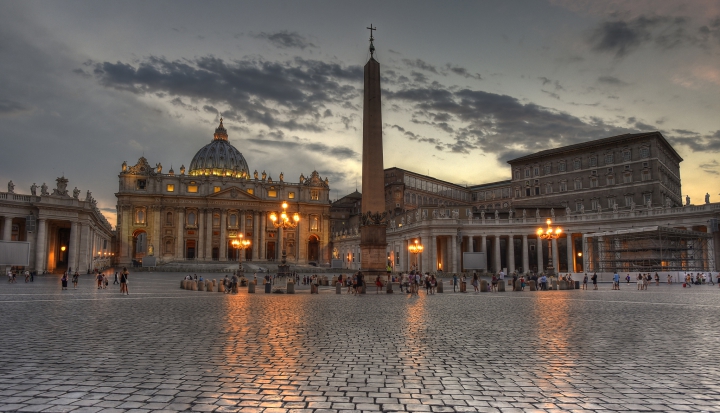In many ways, the story of the church starts with Peter. With the words, “And I tell you, Peter, that on this rock I will build my church,” Jesus appoints Peter as head of his new church and charges him with the responsibility to build it from the ground (Matt. 16).
Throughout the centuries, biblical scholars and theologians have taken these words to imply that Jesus gave unique authority to Peter. But Catholics understand Jesus’ words differently: The new Christian church would be physically built on Peter’s remains.
There’s not much mention of Peter’s eventual fate in the New Testament, but John’s gospel says Jesus told Peter that, when he became old, Peter would “stretch out his hands.” John’s gospel interprets this as an allusion to Peter’s death, by which he “glorified God” (21:18), implying Peter was crucified and died a martyr. An apocryphal text, the Acts of Peter, even claims Peter was crucified upside down.
In 2013 Pope Francis publicly displayed what the church believes to be the genuine bones of St. Peter, discovered during excavations below St. Peter’s Basilica in the 1940–50s. While most scholars agree that archaeologists did uncover Peter’s tomb, the story of the bones is quite perplexing. In addition to a complex archaeological site, secrecy and miscommunication at the time of the excavations have complicated the findings.
Over the centuries, the belief that St. Peter was buried under the Vatican supported early papal authority and established Vatican City as the physical center of Catholicism. And this belief is not just legend or tradition, but based in a large part on historical sources. The Roman historian Tacitus writes in The Annals that the emperor Nero blamed Christians for setting Rome on fire as a pretext for savagely persecuting them. Furthermore, the church historian Eusebius specifies in Church History that Peter was crucified under Nero. Other ancient writers corroborate—Peter was probably crucified under Emperor Nero, most likely between 64 and 67. This probably took place in Nero’s circus, or horse track, located on what we now know as Vatican Hill.
After his crucifixion Peter’s remains were buried nearby, and a memorial was erected over them by the year 200. Once the ambitious Christian emperor Constantine rose to power in the fourth century, he built a basilica over Peter’s tomb, thereby solidifying the memory of Peter’s martyrdom on the Vatican Hill.
It’s not surprising that Peter’s tomb was memorialized in such a large and public way; Christ’s promise to Peter ensured him a major role in the early church. The claim that Peter was the first “bishop” of Rome took hold in the generations after his death, as did the idea of “apostolic succession,” by which the authority of the apostles is passed down to subsequent generations. If Peter was the preeminent apostle, the logic went, the bishop of Rome must be the preeminent bishop.
This article appears in the March 2016 issue of U.S. Catholic (Vol. 81, No. 3, page 49).
Image: Flickr cc via DIana Robinson













Add comment